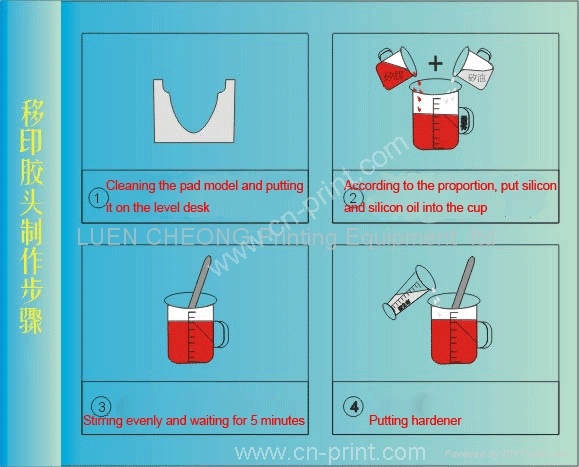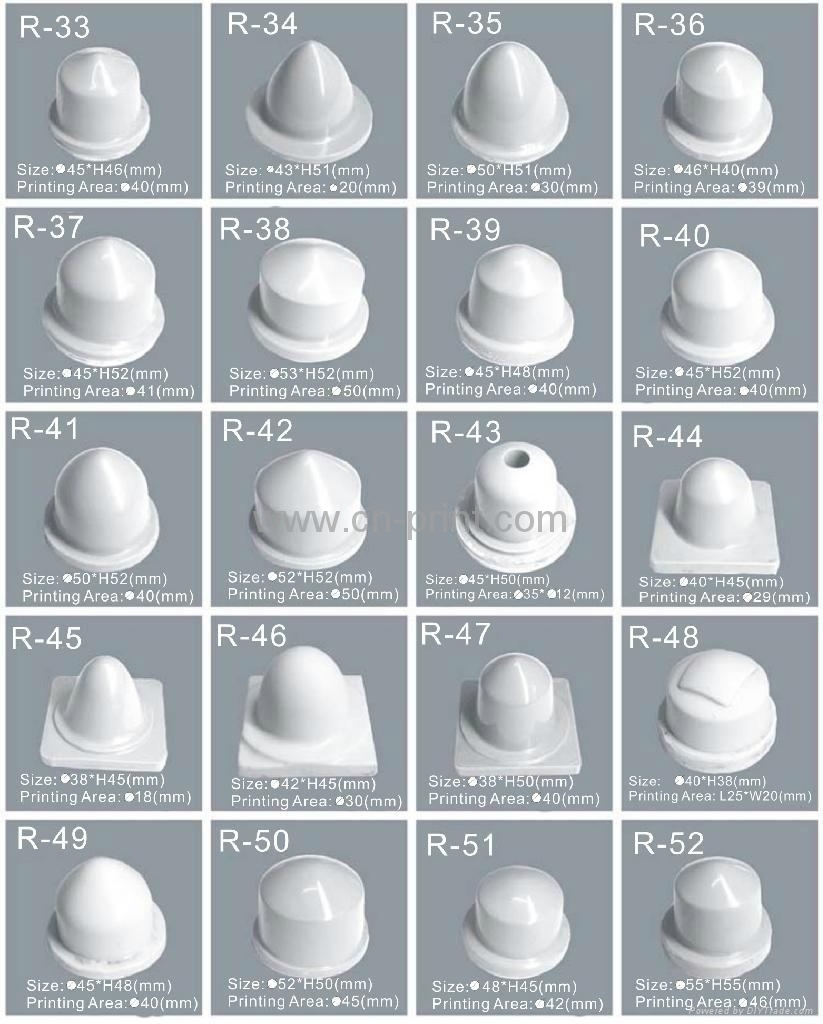


SILICONE PAD PROCESS IN TAMPO PRINTING LINE :
1 The printing cycle begins by flooding the etched area of the printing plate with ink (Figure 1). Pad printing machines use either an open inkwell (shown below in the illustration) or a closed ink cup, which will prevent solvents from evaporating in the inkwell. The ink must have a low viscosity allowing it to flow out evenly over the surface of the plate and into the etched image area.

Step 2 The top surface of the plate is cleaned using a doctor blade, leaving the printing ink in the etched area containing the image
Step 4 After the pad is lifted from the plate the surface of the ink film on the pad starts to dry, making that surface become tackier (Figure4)
Step 5 As the pad is compressed onto the surface of the substrate, the tackiness of the ink's surface enables it to leave the pad and stick to the substrate. The pad will compress considerably during this step, the contour of the pad is designed to roll the image onto the substrate rather than press flatly against it (Figure 5). In fact, a properly designed pad will never form a 0° angle of contact with the substrate, preventing the trapping of air between the pad and the substrate, which can result in an incomplete transfer of the image.